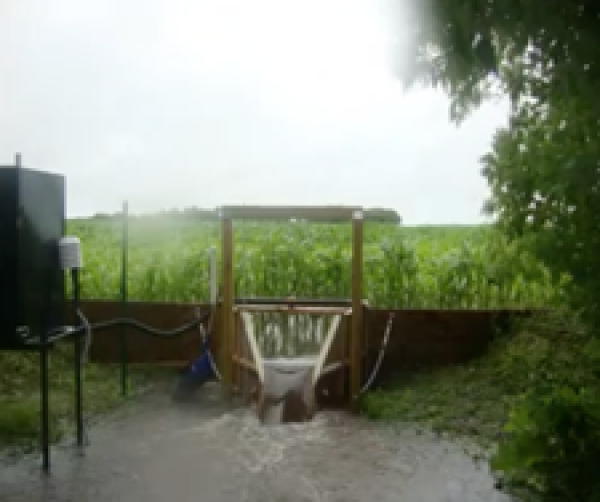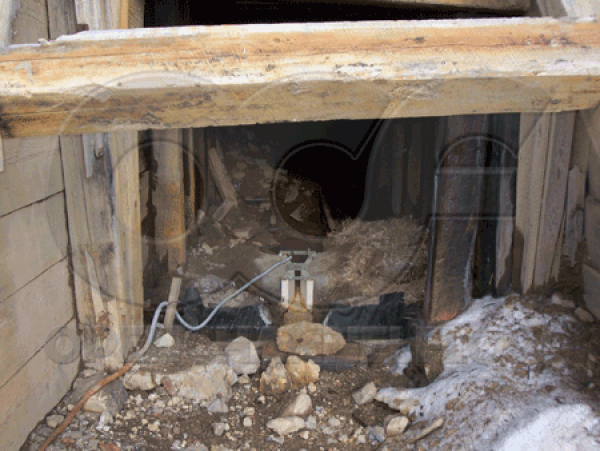This website uses a variety of cookies, which you consent to if you continue to use this site. You can read our Privacy Policy for
details about how these cookies are used, and to grant or withdraw your consent for certain types of cookies.
Edge-of-Field Runoff Measurement with H Flumes
Edge-of-field (sometimes referred to as catchment) monitoring is where flow from a particular field is routed to a monitoring station located at the edge of the field to allow for the characterization of the runoff flows. Edge-of-field monitoring is used to in a number of different ways and serves to act as a link between plot and watershed scale research.
Edge-of-field monitoring has been used to invesitage a variety of topics, including:
- The effectiveness of different farming techniques (e.g. till vs. no-till)
- The nutrient uptake of various crops
- Runoff modeling from pasture lands
- And more...
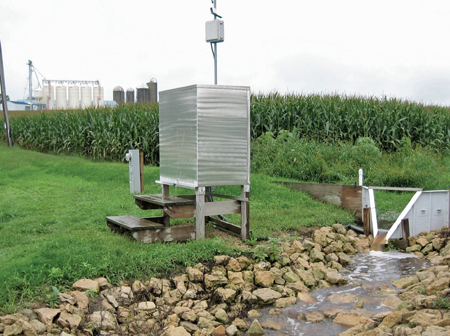
Edge-of-field runoff is usually measure with an H flume. While other flumes (notably the Parshall and the Cutthroat) are sometimes used, their use over the H flume is more driven by a lack of site suitability for an H Flume than it is because the other flume type is more suited to the application.
H Flumes are relatively inexpensive, pass solids / sediments / debris well, and can accurately measure both low and high flow rates. Where upstream ponding is a concern, an H flume with an approach section can be set back into the bank of the field with minimal impact on flow accuracy. Simialarly, while H flumes are recommended to have approach sections of lengths of 5 times thei flume's depth, research has shown that even with a shortened approach and under adverse conditions, the H flume can still exhibit good accuracy.
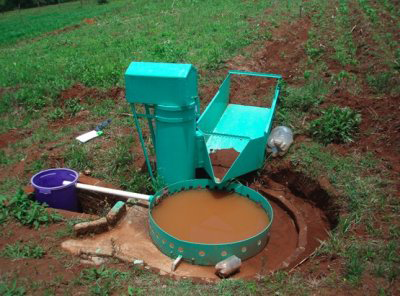
In cost constrained application, edge-of-field H Flumes are typically used in conjunction with Coshocton-Type Runoff Samplers. For other applications, full instruments suites including multi-parameter probes, rain gauges, and data loggers may be used in conjunction with the flume.
The Coshocton-Type Runoff Sampler (also know as a Coshocton Wheel) sits below the discharge of the H Flume and as flow spills off the end of the flume it falls onto the sampler. Curved vanes on the top of the sampler catch the flow are the top is rotated horizontally.
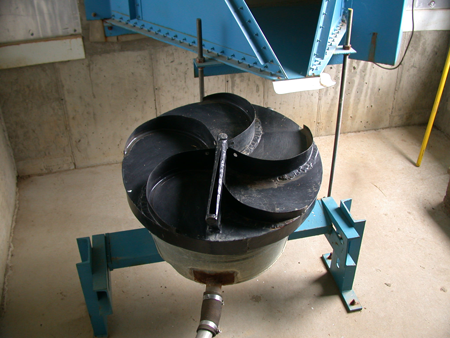
In place of one of the flow vanes an elevated sampling vane is installed. This sampling van stick up above the top of the sampler / vanes and has a slot in in it into which an aliquot sample of the discharge from the end of the flume falls as the sampling vane passes under it. The sample is routed through the base of the sampler back to a sample storage tank. As the discharge from the flume increases, the wheel of the sampler rotates faster – resulting in more samples being taken - which in turn creates a proportional composite sample in the sample storage tank.
Image: National Information Management and Support System
Sources: Great Lakes Regional Water Program, Parsons, D., Coshocton-Type Runoff Samplers, ARS-41-2, 1955, Parsons, D., Coshocton-Type Runoff Samplers, Laboratory Investigations, SCS-TP-124, 1954
Related Blog Posts
Explore more insights in our blog.

LOCATIONS IN ATLANTA, GA & BOISE, ID



